The Finnish Lapphund is a medium-sized, purebred herding dog of Finnish origin. Finnish Lapphunds are also commonly referred to as lappies.
These dogs are very friendly and get along well with all family members and other household pets.
However, this breed craves attention and needs an owner or a family that can interact and play with it on a regular basis.
Finnish Lapphunds typically cost $1,000 to $2,500 USD.
TABLE OF CONTENTS
What is a Finnish Lapphund?
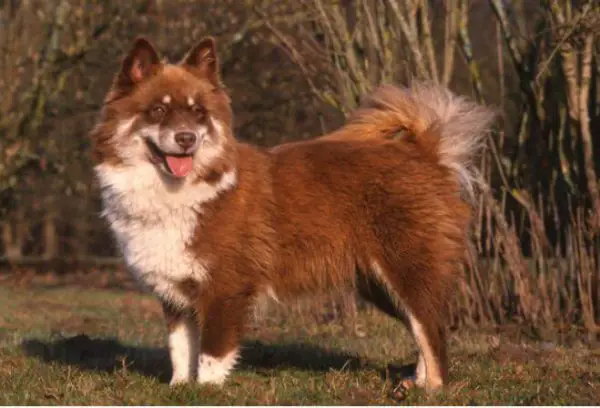
The Finnish Lapphund is a unique breed of herding dog that is named after the native, nomadic, “indigenous” Lap (aka Sami) people of Lapland. Lapland refers to a remote region north of the Arctic Circle which includes parts of Sweden, Finland, and Norway.
Sometimes referred to as “Lappies”, these affectionate dogs are well known for their friendly personalities, their loyalty, their strength and agility, and their overall intelligence. They are excellent with children and senior citizens.
Finnish Lapphunds have their origin in the ancient breeds of Spitzes, which were initially used for hunting reindeer. As the Lap society changed, the role of this breed gradually changed from a hunting dog to one that was used for herding reindeer.
The use of herding dogs for reindeer is considerably less today due to modernization. Nevertheless, there are still remote regions today where they are used to herd reindeer. Experts estimate that there are still several hundred-thousand reindeer today in rural regions that are being herded with Finnish Lapphunds.
Our popular image of reindeer is sometimes skewed by cultural images and portrayals, including the classic Christmas portrayal of reindeer pulling Santa’s sleigh. The reality is much different. Reindeers are very aggressive and dangerous animals. Their antlers can easily cause lethal damage to humans or animals.
The Finnish Lapphund’s strength, agility, and courage were excellent traits for interacting with reindeer, whether in their initial historical roles as hunters or later on when they transitioned to the role of herding dogs.
They are well-known for their unusual, high-pitched bark (sometimes likened to a squawk-like sound) which was used while herding reindeer. The breed’s well-known “startle reflex” is traditionally linked to their roles as reindeer herders.
Historically, Finnish Lapphunds needed to react quickly to sudden and possibly dangerous movements from potentially dangerous reindeer. Despite this reflex which can still be observed today in the breed, they are known to quickly recover from this initial reflex.
They are friendly, loyal, courageous, and agile, and generally regarded as being submissive to people. In contemporary times, Lappies have become popular pets in the colder regions they hail from. They are less popular in other countries, however, that is slowly changing as people learn more about this friendly breed.
As a breed originating in cold climates, they are ill-suited for warmer climates. This doesn’t mean that they are unable to survive in warmer climates. This breed has become popular in Australia. Nevertheless, this is not an optimal environment.
While this is a breed that was bred to tolerate and work in cold outdoor temperatures, it needs to live inside the house with you. It is a very sociable animal and it needs to be part of the family.
Despite their friendly temperament, they have a tendency to bark at unfamiliar things. This behavior allows them to function as effective watchdogs, but their overall friendly temperament makes them unsuitable to act as guard dogs. This breed often resorts to excessive barking whenever they grow bored.
Finnish Lapphunds are medium-sized with thick, long-haired, double-coats. The coat enables them to endure extreme frigid weather and it provides resistance to water. They are adaptable to different living conditions. They are strong and agile animals.
Lappies require lots of attention. As an easygoing, intelligent dog, this breed is well-suited for novice owners, provided that these owners interact with their pets. With proper care, they can live for 12-15 years. They perform well in herding trials, obedience trials, and those skills requiring agility.
After World War II, there was a period where rampant distemper threatened the survival of the breed. Fortunately, aggressive measures were taken by breeders and they were able to save the breed.
In 1945, the Finnish Lapphund was first recognized by “The Finnish Kennel Club” under the name “The Lappish Herder”. In 1993, the name was changed to the official one we use today: The Finnish Lapphund. In 2011, The American Kennel Club officially recognized them as their 171st breed.
Appearance
This medium-sized dog has a thick coat, powerful build, and a broad muzzle. They have small-medium sized, triangular-shaped ears that are set reasonably far apart on the head.
Finnish Lapphund Weight and Size
The average height of this breed is 17-20 inches. Males weigh anywhere from 33-52 pounds, whereas females weigh approximately 33-53 pounds.
Common Colors
Finnish Lapphunds come in many different colors including white, grey, red, etc. But the most frequent color one encounters in this breed is black.
Coat
Finnish Lapphunds have a thick double coat with long hair. The inner and outer coat makes this dog capable of handling the harsh, frigid, arctic climate.
Their outer coat is water-repellant. They have a tendency to shed copiously and they are not hypoallergenic. Owners will have to vacuum lots of dog hair. On average they shed 1-2 times annually.
Personality and Temperament
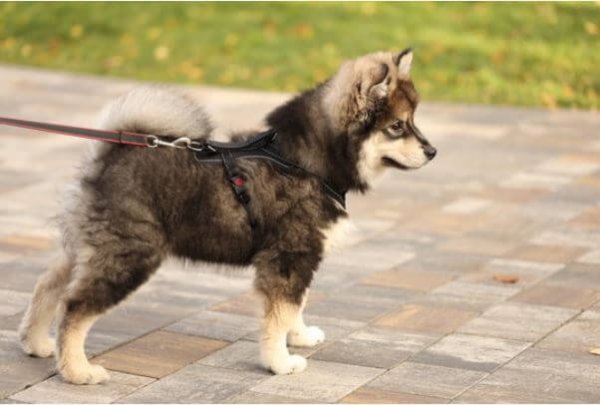
Behavior around other dogs
These friendly dogs behave very well with other dogs. As animals historically accustomed to being part of a pack and confined in close intimate quarters with humans, they don’t like being alone.
Is a Finnish Lapphund a Good Family Dog?
They make wonderful pets. This friendly breed is good with people and other dogs. But they require attention and an owner who will interact and play with them. They shed a lot. When they get bored they have a tendency to destroy things and bark a lot.
So it is a good dog for your family, provided you are able to give it the attention it requires. Otherwise, he will get bored. He might even end up chewing your favorite shoes and barking at the mail-man.
How to Train a Finnish Lapphund
Finnish Lapphunds are very intelligent and eager to learn. They are fast learners. But they can also be very stubborn.
As a “soft-breed” they are considered an easy breed to train. The trick is to create a suitable training program that keeps their interest piqued.
Dog sports and reward systems are often useful. While dog treats have a place in dog training, pet owners should remember that too many of these treats can lead to obesity and other weight problems.
Experts believe that it is best to start training this breed very early on when they are young. In order to keep their interest, it is best to keep all training sessions short and intriguing.
How To Care For a Finnish Lapphund
Exercise Requirements
Experts recommend that you ensure that your dog gets at least 30 minutes a day of exercise. In general, Lappies require moderate daily exercise, either in the form of walks or with outdoor play.
Many owners enjoy taking them for a morning jog. They are not ideal pets for those who live in small apartments.
Grooming and Shedding
Finnish Lapphunds require combing at least once or twice weekly. Owners should be careful to trim the hair in those areas that are prone to matting. They are known to shed heavily.
When they are shedding they need to be combed daily. Shedding occurs once or twice a year on average. Additionally, their nails need to be trimmed and their teeth brushed frequently.
Untrimmed nails are not good for dogs. It can be painful for them and it affects their mobility.
What To Feed A Finnish Lapphund
Finnish Lapphunds require proper dog food containing important nutrients, but they don’t need a special diet for this breed. Approximately two cups of dried dog food daily is usually sufficient.
Occasional treats are okay. But it is important that treats are kept at a reasonable level. Too many treats can lead to obesity and other weight problems.
Additionally, as with all dogs, they require regular sources of fresh, clean water. Water sources should be easily accessible.
It is generally best to avoid giving any dog human food. Some experts argue that occasional table scraps are okay for this breed but this is best discussed with a knowledgeable veterinarian. It is certainly not ideal and should be infrequently done.
While it is often tempting for pet owners to feed their pets, there isn’t a way to sugarcoat the downside for their health. It really isn’t very good for them. And it is easy to develop bad feeding habits.
Known Health Problems
Finnish Lapphunds are generally considered a very healthy breed. Yet as with other dogs, they have their individual predispositions and susceptibility to different health conditions.
Some of the possible problems associated with this breed include Progressive Retinal Atrophy, a form of retinal atrophy (PRA), Canine Multifocal Retinopathy 3 which can cause decay of the retina (CMR3), Glycogen Storage Disease, elbow and hip dysplasia, and cataracts.
Progressive Retinal Atrophy (PRA): This degenerative disease affects the retina’s photoreceptors and it can ultimately lead to blindness. Generally speaking the time it takes from the initial onset of this disease until eventual blindness can take 1-2 years. Unfortunately, there is no current treatment for PRA.
Canine Multifocal Retinopathy 3 (CMR3): Fortunately, and unlike the effects of the more insidious PRA, this degenerative disease does not lead to total blindness. The slow progression of this disease causes circular areas of degenerative detachment which are then filled with fluid.
This fluid build-up eventually causes tan, gray, and pink blisters. On some occasions, these blisters will eventually heal. Sometimes they return post-healing. There is documented evidence of subsequent vision loss.
Glycogen Storage Disease: In this disease, we see excessive carbohydrate levels build up in the body’s tissue. The condition first manifests itself neurologically. It is unfortunately a terminal disease.
Finnish Lapphund and Water
This is not the breed of dog to take with you to the beach for a day of swimming. Although they are not known as water dogs, you can find conflicting anecdotal data online from owners about their pet’s approach to water.
Some owners say that their dogs hate even getting their paws wet. Others report that in the hot weather, their pets actually enjoy going in (and even wading!) in the water.
Generally speaking, this is not a breed known for favoring water. Nevertheless, individual temperament will probably play a role in how your Finnish Lapphund deals with the water.
Buyer’s Guide

How to Choose a Finnish Lapphund Puppy
When you’ve finally made the decision to own a Finnish Lapphund, you now have the task of choosing the best puppy. What is the best method for choosing a puppy?
Forget the classic advice that you’ve heard that you should choose the first one that comes over to you. It sounds nice, but the problem is that all of the other dogs in the litter will get overlooked.
Experts suggest that it is best to first observe the entire puppy litter as a collective unit. This way, the more hesitant puppies will also get properly observed and assessed, rather than only the most excitable ones who first approach you.
After observing the litter, each individual puppy should then be assessed when he is separated from the litter. This is a great way to observe the dog’s overall behavior in different settings.
All diligent prospective owners need to assess the puppy for any physical aberrations:
- Carefully observe the animal’s coat. Ask yourself: Is it clean and healthy?
- Are there patches of hair loss or any bald spots?
- Are there abrasions or inflammations on the dog’s skin?
- Does the puppy walk with ease?
- Is there evidence of any problems with gait?
- Are the mucous membranes and other areas free of infections, swelling, discolorations, inflammations, redness, discharge, etc?
- Are the puppy’s groin and surrounding area free of abnormalities? The entire region should be free of inflammation.
Questions To ask Breeders
There isn’t a perfect list to cover the range of questions to ask a professional breeder. The following are the types of questions you definitely want to ask. A good breeder will always be able to provide you with all pertinent information and paperwork:
- What vaccinations has the dog received?
- What vaccinations are still required?
- What are all the medical details and issues that I need to know about this dog?
- What paperwork do you have for me regarding the dog’s medical history?
- What is your company policy if my dog should eventually experience serious genetic problems later on in life?
- Are the puppies in your facility registered?
- If so, with which organization are they registered?
- How long will it be until I can take my puppy home with me?
- Am I permitted to visit the facility where you raised the puppies?
- Can I observe and interact with the entire puppy litter?
- Can I meet the puppy’s parents?
- What is the dog’s family medical history?
- How long have you been a professional breeder?
- Are you a part of a recognized breed club? If so, to which club do you belong?
- Do you have any professional references to show me?
Red Flags
In your search for a responsible breeder, there are certain things you need to watch out for. The following red flags are important signs that you should recognize which will indicate that you aren’t dealing with a responsible breeder or a professional breeding facility:
- You should be concerned if the breeder does not have any professional references to show you.
- You should also be concerned if they are unable to provide you with the proper documentation for the dog, whether medical or registration.
- A serious responsible breeder will always ask you to sign a contract.
- A good breeder will not bargain with you over the price. This isn’t a bazaar.
- If they are selling the dog for considerably less than it would normally cost, you should be concerned.
- If the dog appears dirty or disheveled, unhealthy, or neglected, you should be very concerned.
- If the breeding facility is dirty you are dealing with a shady business. A proper breeding facility must be clean and hygienic to meet all proper breeding standards.
- The breeder doesn’t ask you any questions. This is the sign of an unprofessional or negligent breeder. A good breeder will grill you with important questions to determine if you are likely to be a good dog owner. He will want to find a loving home for his puppy, and he cannot do this if he can’t determine if you would make a responsible owner. If they neglect this critical step, it proves that they are more interested in the sale than in the puppy’s welfare.
How Much Do Finnish Lapphunds Cost?

What is your budget? From the outset, you need to know that as is the case with purebreds, they can be very expensive to own. Professional breeders can charge anywhere from $1000-$2500 for Finnish Lapphunds.
Purebreds can occasionally also be found at local animal shelters. If they are available, Finnish Lapphunds will certainly cost considerably less money than from a breeder. At an animal shelter, it will cost approximately $300 to cover the expense of maintenance for your puppy prior to his adoption. The precise amount will depend on the individual shelter.
In addition to the cost of the purchase, prospective dog owners need to consider the overall costs of feeding your dog throughout the different stages of his life, the veterinarian fees for checkups, exams, and vaccines, and the costs of periodic grooming. Prices will fluctuate during the different stages of your dog’s development.
Finnish Lapphund versus Finnish Spitz

Finnish Lapphund Summary Table
| Pros | Cons |
| Intelligent, loyal, friendly, agile, and courageous. | Finnish Lapphunds can get bored. |
| They are generally submissive (but not shy) with humans. | Require lots of interaction and attention from their owners. They are not ideal for those owners who are unable or unwilling to give them the required attention. |
| As a “soft-breed” they are considered an easy breed to train. | May bark around unfamiliar people, or when they are bored. |
| Get along well with children. | Shed their hair copiously. |
| Have a long lifespan and can live from 12-14 years. | Not hypoallergenic breeds. |
| Get along well with other dogs. | As with many breeds, they are susceptible to certain medical conditions that owners will need to consider. |
| Bred to handle the extremes of outdoor cold temperatures. |
Summary
So in conclusion, what can we say about Finnish Lapphunds?
They are friendly, loyal, intelligent, and courageous. They are strong and agile and they make excellent family pets.
Lappies are excellent for children and the elderly. Many experts maintain that they are also ideal for first-time owners, provided that their owners are willing to give them proper attention.
Finnish Lapphunds enjoy the companionship of people and other dogs. It is essential that they get the attention and human interaction that they need. When they are bored, they are prone to engage in excessive barking. While proper training can do much to limit and curtail this behavior, it will never be entirely eliminated.
They are medium-sized dogs with thick double-coats of long hair. They shed heavily one or two times a year, and require periodic grooming which should include maintenance of nails and their teeth.
As a breed that originated in extremely cold climates, this isn’t an ideal dog for those owners living in warmer regions. Nevertheless, they are capable of living in such climates. The growing popularity of this breed today in Australia is proof of this.
In such less than optimal environments, owners will have to ensure that their pets have easy access to the indoors where there should be suitable air conditioning or other climate control technology to accommodate their physical needs and help them cool down.
Finnish Lapphunds are considered a healthy breed. As with most dogs, they are susceptible to several different health conditions. Some of the problems associated with this breed include Progressive Retinal Atrophy, a degenerative form of retinal atrophy (PRA), Canine Multifocal Retinopathy 3 causing retinal decay (CMR3), Glycogen Storage Disease, elbow and hip dysplasia, and cataracts.
With the proper regimen of daily exercise, a diet rich in essential nutrients and minerals, and frequent medical care, Finnish Lapphunds can live a long time. Under optimal conditions, they can live anywhere from 12-14 years.
We have tried to provide you with all the relevant information you need to help you decide if this is the right breed for you. We have included all pertinent information regarding their general temperament, characteristics, health issues, and overall costs.
Is the Finnish Lapphund the correct breed for you? There is certainly a lot to love about this playful and loving breed. They are very easy to train and they have great temperaments. They love people and are friendly with other dogs.
The question ultimately boils down to this: Are you, the prospective owner willing to provide this sociable dog with the necessary attention it requires? If the answer is yes, then the answer is a simple one. This is indeed an excellent pet to own. Under such conditions, we highly recommend the Finnish Lapphund as a pet.



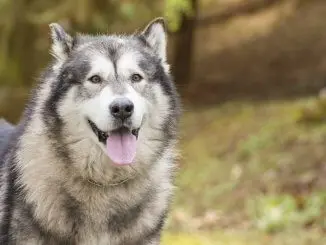

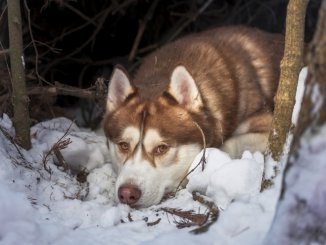
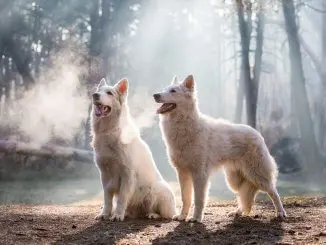
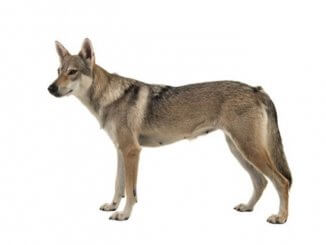
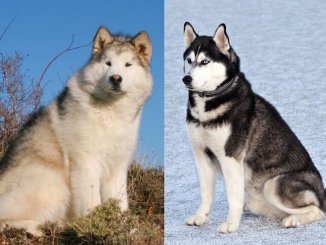

Be the first to comment